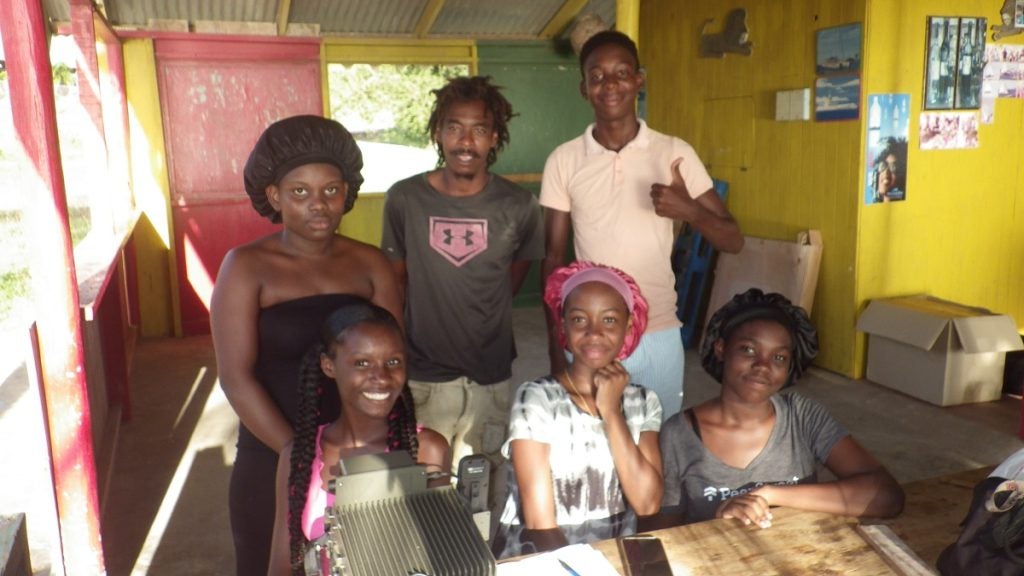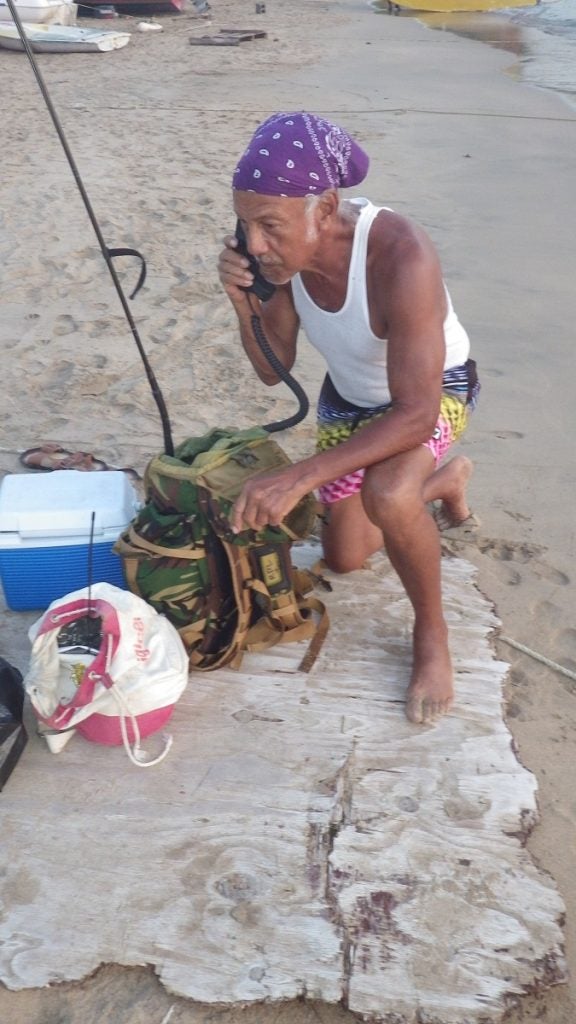
When a hurricane hits, having emergency communications (emcoms) networks and infrastructure in place can be vital in providing a rapid response to the areas most affected, which are often in remote locations. Strong winds can pull down power lines, cause extensive damage to homes and businesses, and threaten people’s lives.
In St Vincent and the Grenadines, the Rainbow Radio League (RRL) was formed in 1995, and it was later rebranded during its 25th anniversary to its current name, Youlou Radio Movement (YRM). Youlou is one of the indigenous names of the island, meaning ‘rainbow’.
The main role of the RRL/YRM has been to provide emcoms services as its contribution to national development.
Free ham radio courses
The YRM is a non-profit, community service organisation comprised of volunteer radio amateurs, (hams) and its training programmes are designed to lead up to an amateur radio licence. Over the years, these courses were provided for free as the YRM’s ongoing contribution to the area of disaster management, and emcoms in particular.
People who have benefitted from this ham radio training include farmers, police, student nurses, scouts, air-traffic controllers, teachers and taxi drivers – and just about anyone interested in short and long-distance two-way communications.

Connecting the islands
RRL/YRM director Donald De Riggs and his team are working to establish greater connectivity across the East Caribbean by developing a well-functioning emcoms system in St Vincent & the Grenadines.
“Our domestic HF network is about nearing completion, but it is an ongoing venture, as newly trained radio operators become licensed who do not own HF radio equipment, but who are ready to volunteer their services,” says De Riggs.
The YRM conducts annual field exercises just before the official start of the hurricane season, which runs from June to November. It has also conducted joint field exercises, dubbed Operation X, with neighbouring islands. Operation X started out with just Grenada and St Vincent and the Grenadines, and it has expanded to include St Lucia and Dominica.
These field exercises have allowed radio operators from each island to visit all of the emergency shelters in a neighbouring territory, setting up and operating portable, high-frequency (HF) radio stations, while maintaining contact with the various local disaster management offices.
Responding to Hurricane Maria
In 2017, the RRL was part of a joint medical and emcoms team that responded to the needs of ravaged Dominica, following the devastation left by Hurricane Maria.
On that occasion the team set up and operated from the rural district of Wesley. Their first mission was to repair the diesel generator at the hospital, which made the clinic the only functional one in the northeast of Dominica. The RRL team conducted damage assessment missions, as well as coordinating the arrival of relief supplies.
During the three-week mission, equipment supplied by Australia-based Barrett Communications, such as rapid-deployment broadband antennas, was used extensively with great results. Daily communications on the HF bands was reliable and effective.
De Riggs says: “I recommend that local radio amateurs in Dominica and throughout the Caribbean be provided with portable HF radio equipment, including rapid-deployment broadband antennas, similar to what was provided and donated by Barrett, as these assets proved their efficacy during this event.”
The operator of the community FM station donated the solar panels that were used to power the HF equipment the YRM used after the Dominica hurricane. The electricity supply was so severely damaged that it was not restored for about six months.
Donations of equipment
To date, Barrett Communications has provided four shipments of equipment to St Vincent and the Grenadines since 2016. This includes manpack and base HF radios, as well as rapid-deployment portable antennas and mobile HF antennas. Gifts have also included solar panels, which are primarily used when conducting field exercises and in real-life scenarios, such as in the aftermath of hurricane Maria.

Approximately 20 HF stations have been donated by Barrett throughout the multi-island state, some of them HF manpacks, enabling portable operation and deployment.
Tough tropical conditions
The most recent gift includes two software-defined radios (SDRs), which are being field-tested under harsh, tropical conditions, with feedback being provided to Barrett technicians.
“Under humid, tropical conditions, along with a high saline environment, certain equipment parts can perish,” says De Riggs. “In the past, these issues were reported to Barrett and, in every instance, replacement parts were received, so even though the equipment was a gift, the after-sales service is excellent, to say the least.”
Ready for anything
“Besides staging our pre-hurricane season readiness drill in May, the YRM was among the Caribbean hams who conducted an all-night vigil during the passage of tropical storm Brett in June, and during the month of August it conducted three readiness drills, including a weekend exercise at Mayreau and the Tobago Cays,” he continues.
“During those outings, only Barrett antennas were used, with reliable results, connecting several regional and extra-regional stations. It was also the first time for a portable HF operation from the Tobago Cays, using the Barrett 2090 HF manpack.
“In summary, we are in a state of readiness, and that readiness has been facilitated by Barrett.”
To learn more about the equipment Barrett Communications offers, download the free whitepaper below.


